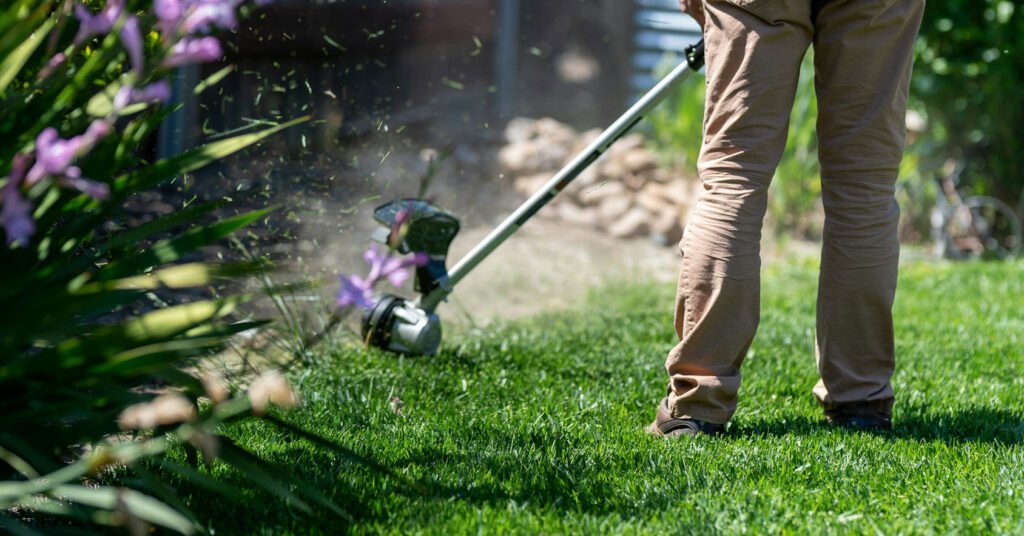As the clouds part and the frost begins to thaw, your garden will need a little freshening up. Spring is the perfect time to sweep away the remnants of the colder months and set the stage for lush, vibrant growth.
You don’t need fancy tools or a ton of time—just a solid plan and a sprinkle of motivation. Here’s how to wake your garden up from its winter slumber and prepare it for a blooming season ahead.
Take Stock of the Frosty Aftermath
All gardens suffer a little damage during the colder months. So, start by taking a close look at your outdoor area to see what surprises winter has left behind.
Blackened or wilted leaves are usually a telltale sign that the frost didn’t play nice. You might also spot cracked pots, waterlogged patches, or soggy mulch.
If it’s been a particularly wet or windy season, as they normally are in the UK, your ornaments or trellises may have moved out of place. And don’t be surprised if some plants look a little leggy or bare.
Take notes as you go to keep track of the areas that need extra care, and prioritise those that were hit the worst. That way, your garden won’t fall behind as spring picks up the pace.
Clear the Debris
Before you start digging or trimming, you need a clean slate to see what you’re really working with. Tidying up also helps prevent pests and diseases from getting too comfortable.
Winter has a habit of dumping all sorts of debris where it doesn’t belong. You’ll likely have fallen twigs, soggy leaves, and other random objects littering your lawn.
Clearing it all in one go is far less painful than dragging it out over several weekends, but don’t get rid of the green waste. You can turn it into compost later.
Prune Like a Pro
Pruning might sound intimidating, but it’s really just giving your plants a stylish spring haircut.
To help them bounce back faster, grab a pair of sharp, clean secateurs and remove any dead, damaged, or diseased branches.
When it comes to cosmetic pruning, take a moment to learn what each plant prefers. Catering to your greenery’s needs results in healthier growth and a tidier-looking space overall. Not to mention, it’ll spare you from dealing with overcrowded stems or patchy blooms.
Lavender, for instance, benefits from a good chop to keep it from getting woody. On the other hand, ornamental grasses often need a light trim to remove dead blades.
While you’re at it, refresh your garden beds by clearing away tired foliage and spent annuals. You should also divide any overgrown perennials to give them more room to thrive and double your flower supply for free.
Prep the Soil
A well-prepped soil gives your plants the solid start they need to flourish, making everything from watering to weeding much easier down the line.
Yours is likely feeling a bit depleted after months of supporting dormant roots. To figure out exactly what it needs, give it a once-over with a simple soil test kit. You can find those in most garden centres and online retailers.
If it’s lacking nutrients, compost is your best mate. Mix it in generously after aerating the ground with a garden fork to improve drainage and allow the roots to breathe.
And if the pH level is out of balance, add garden lime to raise it or sulphur to lower it as necessary. Just make sure to follow the product instructions and retest the soil after a few weeks to track your progress.
Plant New Seeds
Ready to swap soggy soil and bare borders for vibrant blooms and lush foliage? Then you need to choose your greenery wisely.
When replanting, go for hardy varieties that can power through a chilly morning and still look cheerful by lunchtime. It’s best to plant seeds indoors first to give them a head start, then move them outside once the weather settles into a steady rhythm.
To make future garden maintenance a breeze, group your plants by their light and watering needs.
Companion planting will save you a world of hassle down the road, too. Marigolds and tomatoes are the perfect couple. They help keep pests at bay, and so do basil and peppers. They grow even better side by side, providing a much stronger flavour.
Sort Out Your Watering System
Hand-watering is the simplest, most affordable approach, until you miss a day and your plants start wilting dramatically.
To save yourself the hassle, install a drip irrigation system or invest in self-watering planters that deliver just the right amount where it’s most needed.
Collecting rainwater in barrels is another smart move, especially if you’re trying to keep your water bill under control.
In any case, it’s always best to schedule this chore early in the morning before the sun starts zapping away the moisture.
Keep tabs on the soil’s moisture levels and adjust as you go. To find that sweet spot between soggy and parched, stick your finger about an inch into the soil. If it feels dry, it’s time to water; if it’s still damp, hold off a little longer.
Apply Mulch for Weed Control
Think of mulch as your garden’s trusty sidekick, quietly working behind the scenes to keep everything running smoothly. It suppresses weeds, improves water retention, and helps keep plants looking tidy and vibrant.
Opt for natural materials, like bark chips, straw, or shredded leaves. They’re affordable, easy to find, and gradually enrich the soil as they decompose—a win for both your garden and the environment.
Just be sure to apply your mulch after a good watering session or following rainfall to lock in the moisture.
Turn Waste into Compost
Instead of tossing your garden waste into the bin, a compost heap will give it a second life. It’s one of the easiest and most rewarding ways to recycle at home.
Start with green materials, like vegetable peelings, grass clippings, and coffee grounds. Then, balance them with 2‒3 parts brown waste, such as dry leaves, cardboard, or shredded newspaper.
This mixture helps keep your compost well-aerated and prevents it from turning into a soggy mess. To speed up the breakdown process and keep unpleasant smells at bay, turn the heap every week or two with a garden fork to introduce oxygen.
Over time, you’ll be rewarded with a rich, crumbly compost that’s bursting with nutrients. It’s perfect for improving soil structure, feeding your plants, and reducing the need for store-bought fertilisers.
Create a Seasonal Maintenance Schedule
Staying on top of these tasks is much easier when you have a solid schedule to guide you. So, jot down seasonal chores, and set gentle reminders for when it’s time to sow seeds or bring in the harvest.
It doesn’t have to be anything fancy; a simple wall calendar with a few scribbles or a well-loved notebook will do the trick.
If it all starts to feel a little overwhelming, there’s absolutely no shame in calling in a professional gardener to help with the trickier bits. They’ll help you get your garden back on track and may even offer valuable advice on how to keep it happy and healthy throughout the seasons.
Conclusion
Spring gardening isn’t just about sweeping away the remnants of winter. It’s about giving your outdoor space the reset it deserves.
Check for frost damage, spruce up the soil, pair your greenery carefully, and you’ll set it up for a blooming, low-effort season ahead.
Before you know it, you’ll be sipping tea among the roses, wondering why you didn’t start sooner.



